If you love a dessert that’s cozy, elegant, and downright irresistible, this Pecan Upside Down Cake is about to be your new favorite. A light, airy, super simple vanilla génoise topped with glossy, toasted pecans, all drenched in a rich, buttery homemade butterscotch sauce (without corn syrup!). Nutty, sweet, and incredibly easy. Just flip, slice, and enjoy!
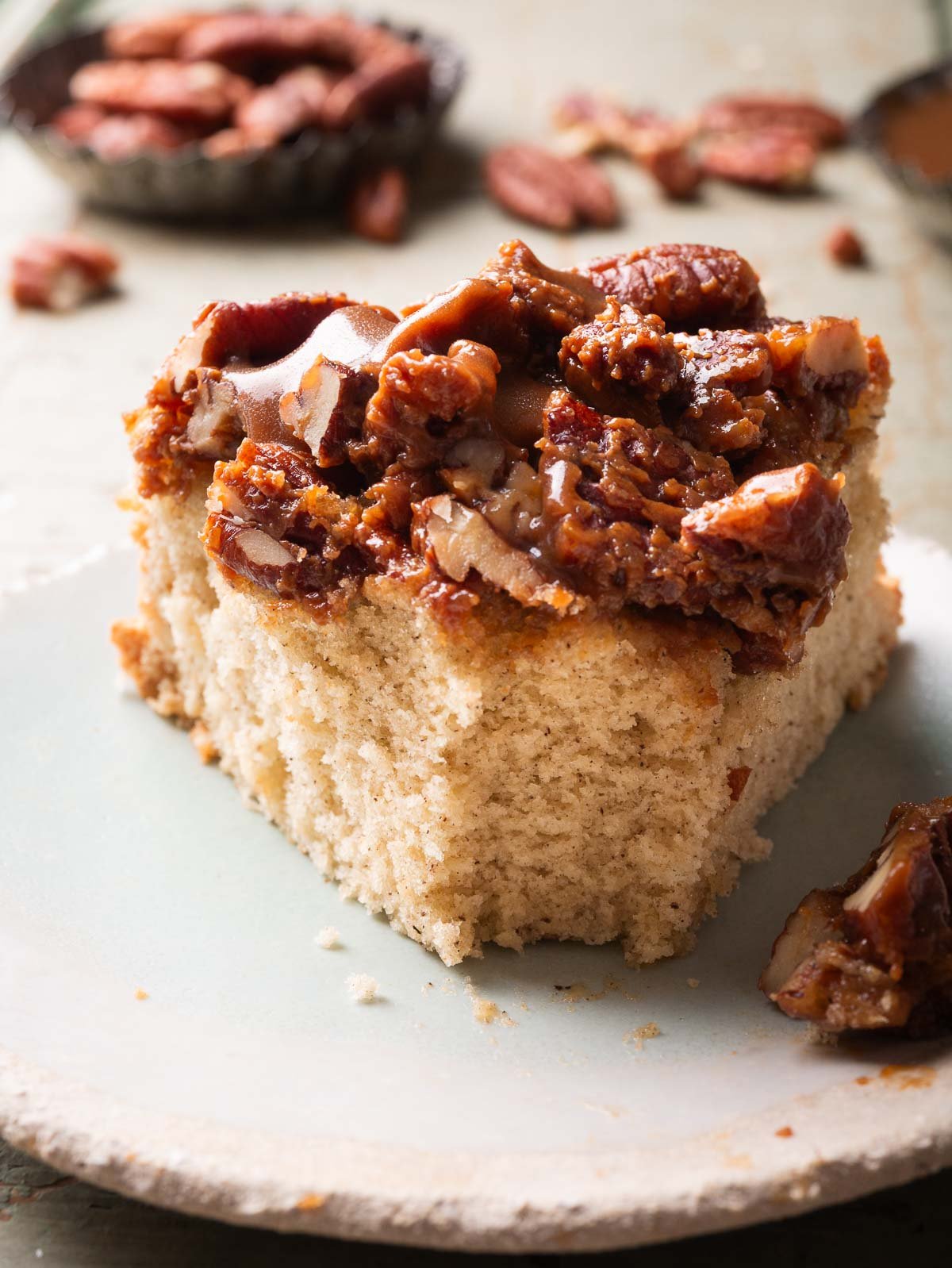
Why you should try this recipe
- Not your usual upside-down cake – Most upside-down cakes are made with a vanilla sponge, but the richness of the caramelized pecans calls for something lighter. After testing a few versions, I found that the traditional sponge was too heavy for my taste. So, I swapped it out for a simple, vanilla-infused French génoise. The result? A light, airy cake that perfectly balances the rich, buttery butterscotch sauce and crunchy, caramelized pecans. It’s a combination you’ll crave over and over: a perfect harmony of crunch and softness.
- Simple to make – Don’t let the stunning presentation fool you. This cake is surprisingly easy to pull off, even for beginners. No need for traditional caramel that can burn easily, and no bain-marie génoise that risks turning into scrambled eggs! Just simple techniques, a few ingredients, and a quick flip, and you’ll have a dessert that looks impressive and tastes delicious. If you’re a fan of génoise, you might also enjoy my Savoy Cake (Gâteau de Savoie) for another delicate, light dessert.
- A recipe for any occasion – Whether you’re hosting a dinner party or just enjoying a quiet moment, this cake fits the bill. It’s refined enough for special events and cozy enough for everyday indulgence. For more crowd-pleasing desserts, don’t miss my Pistachio Raspberry Cake or the zesty Lemon Ricotta Pound Cake.
Get 5 Days of 30-Minute Vegetarian Dinners – FREE!
Sign up TO MY EMAIL SERIES + NEW RECIPES
The ingredients you’ll need
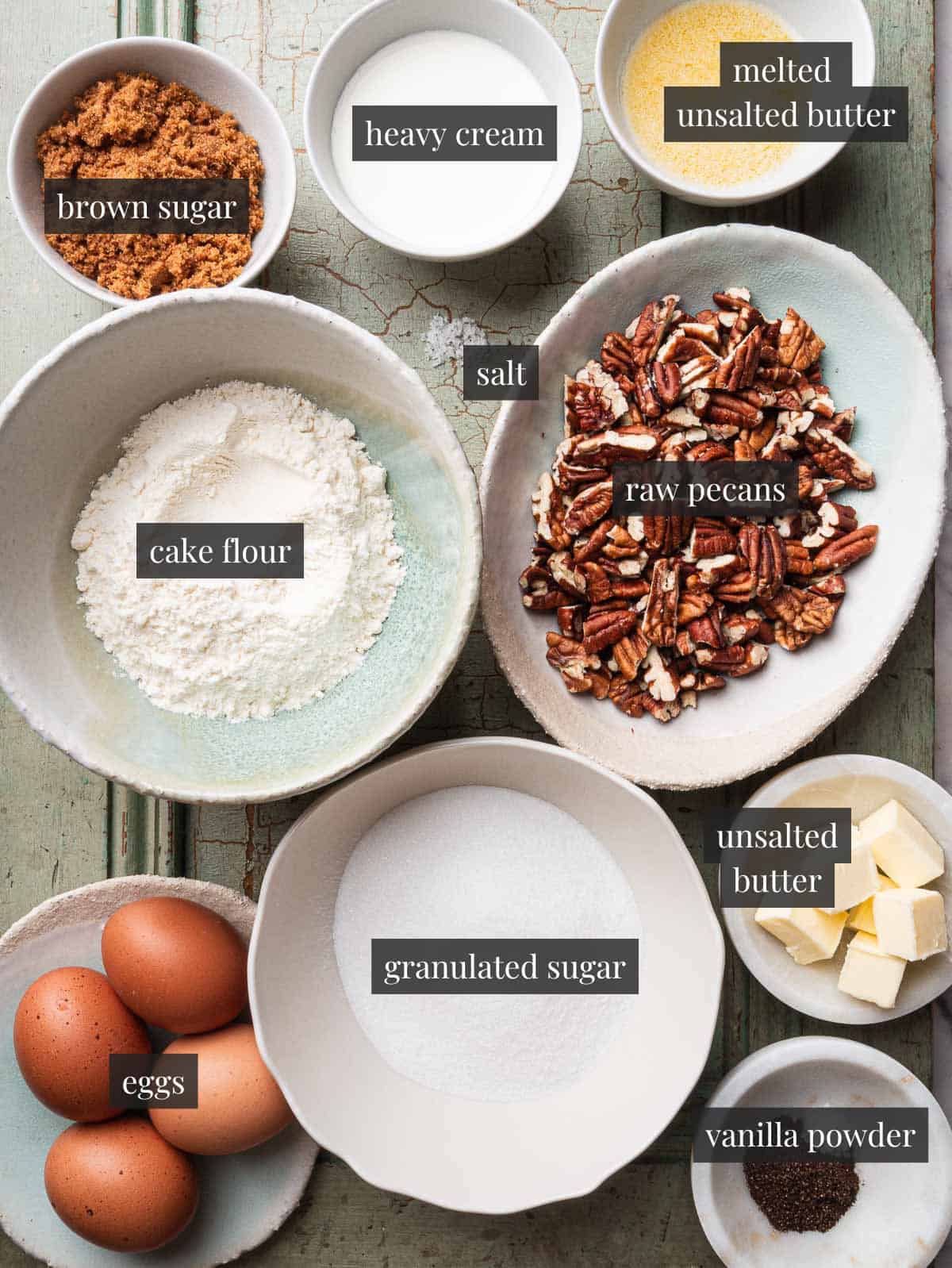
(Note: the full ingredients list, including measurements, is provided in the recipe card at the end of the post.)
- Flour – I used cake or pastry flour for the airiest texture, but all-purpose flour is also commonly used in génoise and works perfectly well. Both will give you that light, delicate crumb.
- Eggs – Eggs are the backbone of génoise, so quality is key! For the best results, choose free-range organic eggs. They’ll lend the cake its lightness and richness. Have extra eggs? Put them to good use with dishes like Poached Eggs in Brie Sauce or classic French Baked Eggs (Oeufs en Cocotte).
- Unsalted Butter – For optimal flavor, opt for cultured butter when you can. This butter undergoes a fermentation process that enhances its complexity. Look for labels that say “cultured” or “European-style butter.” Leftovers? Use them to make my French Apple Cake, or indulge in a decadent Chocolate Loaf Cake with Chocolate Almond Glaze!
- Vanilla – I typically use vanilla powder or vanilla bean paste for their rich, deep flavor, but pure vanilla extract works as a great substitute if that’s what you have on hand.
Love pecans? Check out my Brown Butter Chocolate Chunk Pecan Cookies!
How to make Pecan Upside Down Cake?
(Note: please see the recipe card below for the complete written instructions and measurements.)
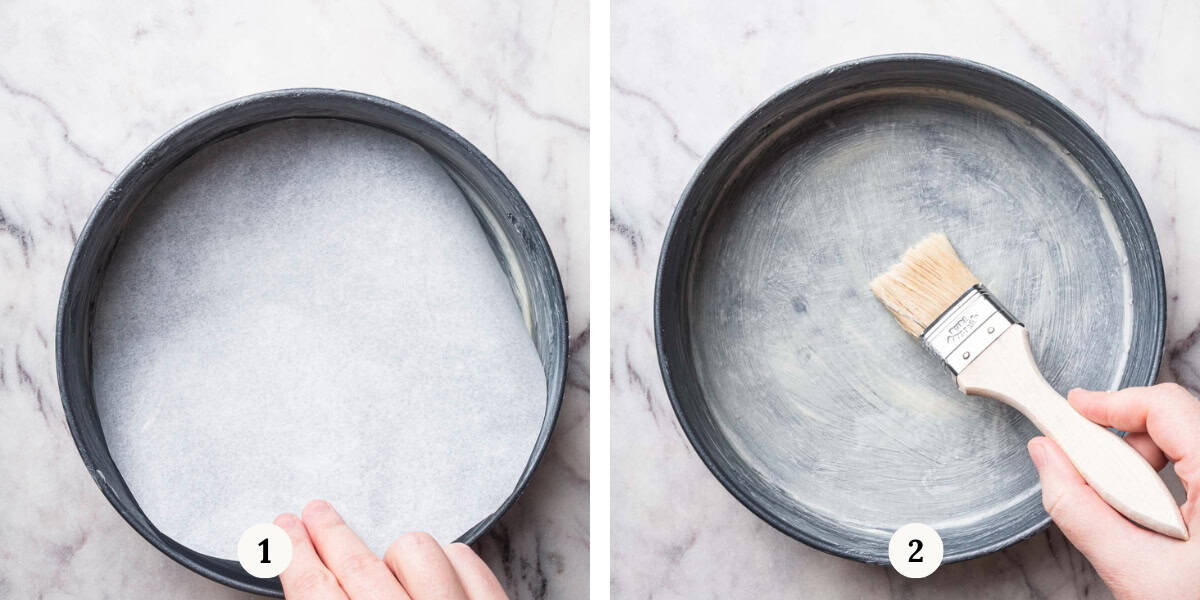
Step 1. Prepare the pan – Preheat the oven to 325°F (170°C) with the fan on. Generously butter a 9-inch (23 cm) round cake pan, then line the bottom with a round of parchment paper cut to fit (Image 1). Brush the parchment paper with butter as well (Image 2). Set aside.
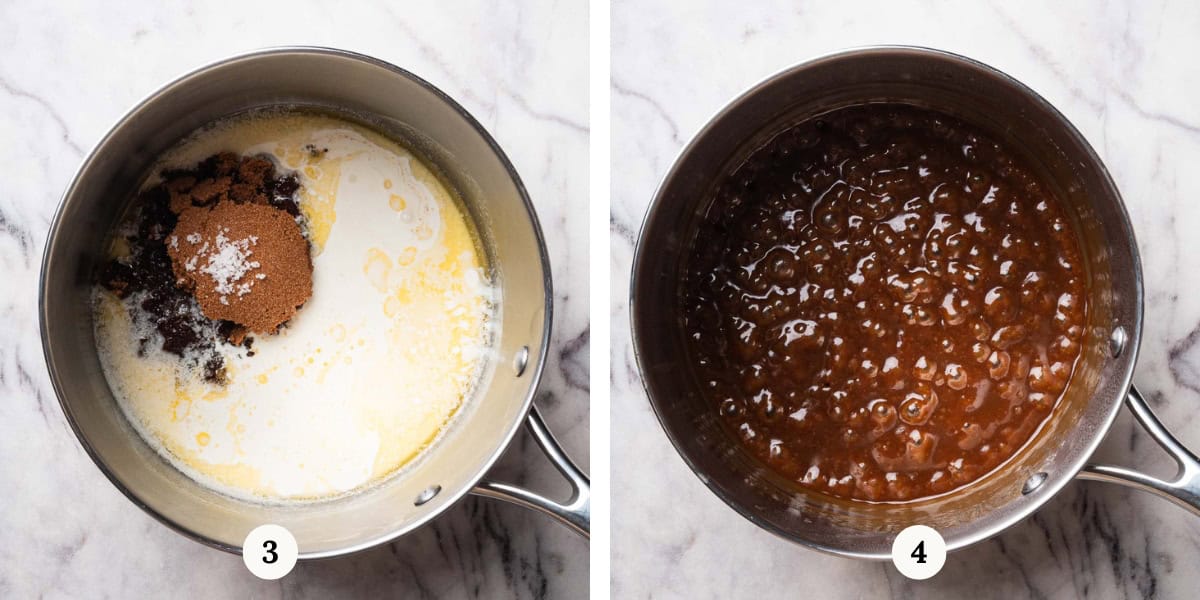
Step 2. Make the butterscotch sauce – In a medium heavy-bottomed saucepan (avoid non-stick), melt the butter over medium heat. Add the brown sugar, salt, and heavy cream (Image 3), stirring gently with a rubber spatula until smooth and well-blended. Bring the mixture to a gentle boil, occasionally scraping down the sides of the pan. Let it boil for 4 minutes (Image 4), stirring often, until the sauce is velvety and slightly thickened.

Step 3. Add the pecans – Remove the saucepan from the heat and stir in the chopped pecans until evenly coated in the butterscotch sauce (Image 5). Pour the mixture into the prepared pan, spreading the pecans into an even layer (Image 6).
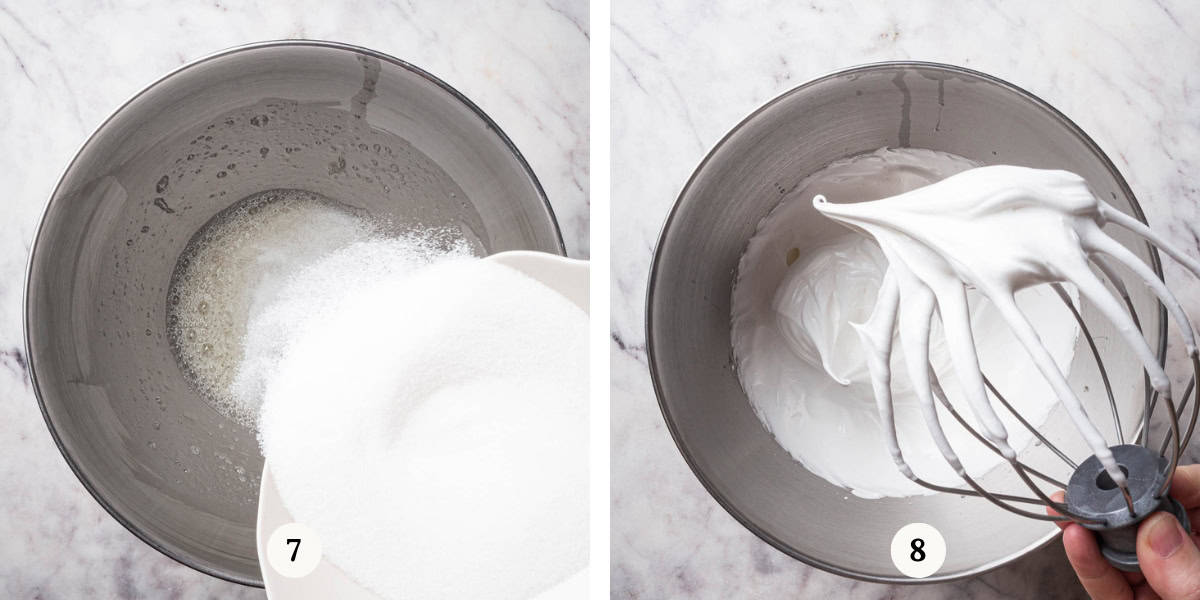
Step 4. Make the meringue – Separate the egg whites from the yolks. In a large mixing bowl, whisk the egg whites and salt on medium speed until foamy (about 45 seconds). Gradually add the sugar in three additions (Image 7), whisking for 1 minute after each addition. Continue whisking until stiff peaks form, about 5 minutes total (Image 8). Finish by increasing the mixer speed to high for 10 seconds to firm up the meringue.
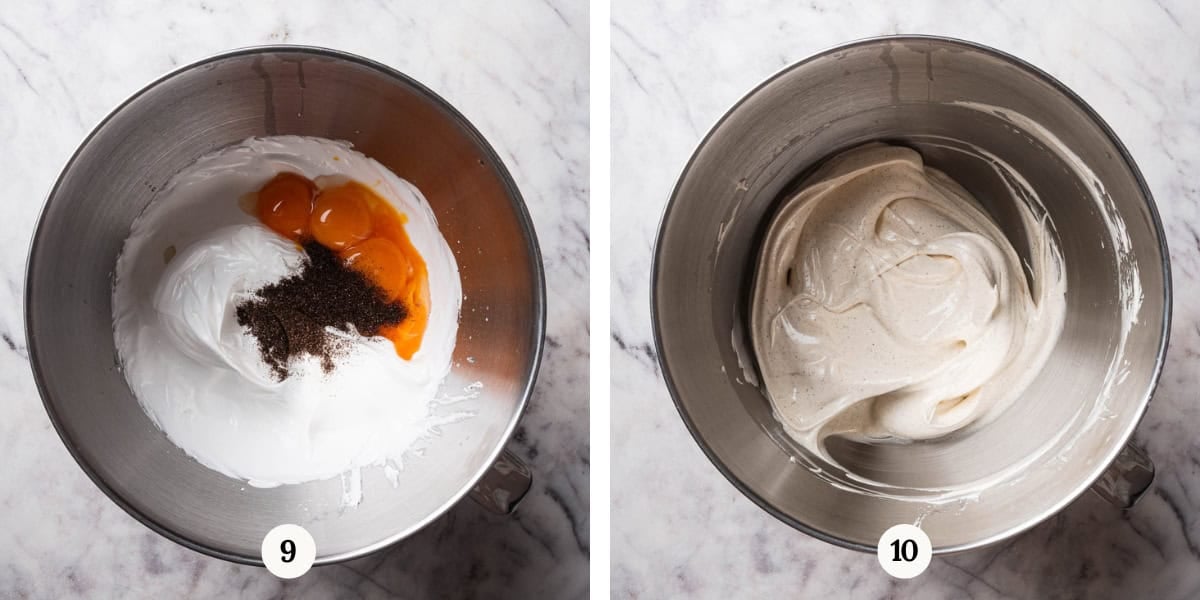
Step 5. Add egg yolks and vanilla – Add the egg yolks and vanilla powder to the meringue (Image 9). Mix on low speed until just combined, scraping the sides of the bowl to ensure everything is fully incorporated (Image 10). Be careful not to overwork the batter and stop as soon as it’s mixed.
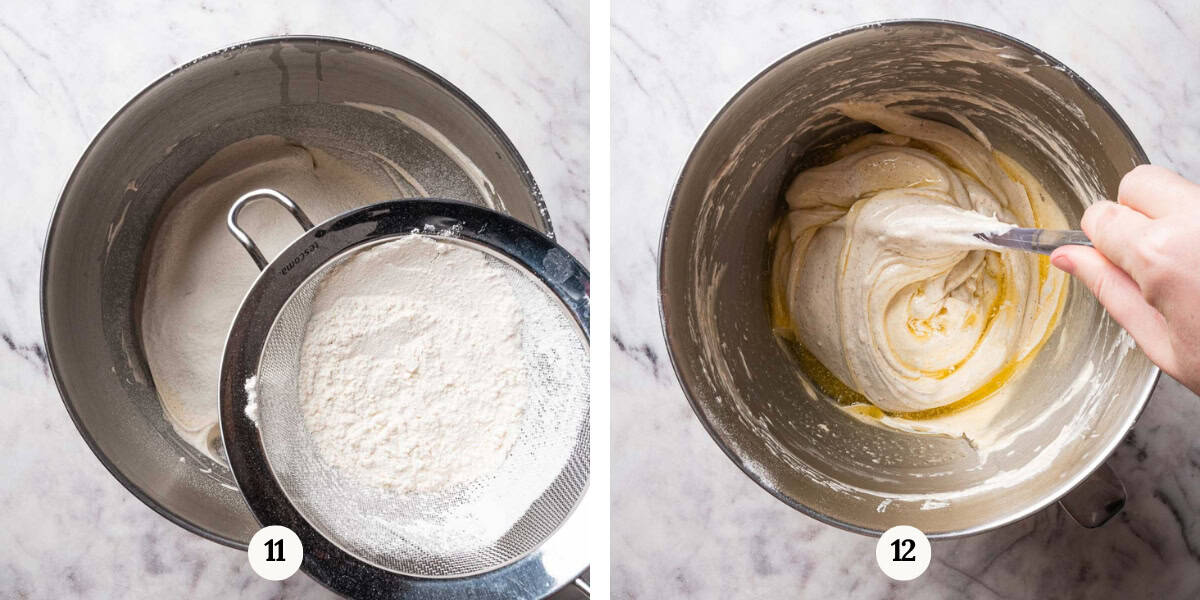
Step 6. Fold in the dry ingredients & butter – Sift the flour over the meringue mixture (Image 11). Using a rubber spatula, gently fold by scooping from the bottom and lifting the mixture over the top. Repeat until fully combined, being careful not to deflate the meringue. Then, add the melted butter and fold it in gently, using the same delicate motions (Image 12).

Step 7. Bake the cake – Pour the génoise batter over the butterscotch pecan layer (Image 13). Bake for 35 minutes, or until the cake is risen, golden, and a toothpick inserted into the center comes out clean (Image 14). Let the cake cool in the pan for 5-10 minutes (no longer). If the cake cools too much, it may stick when you try to remove it.
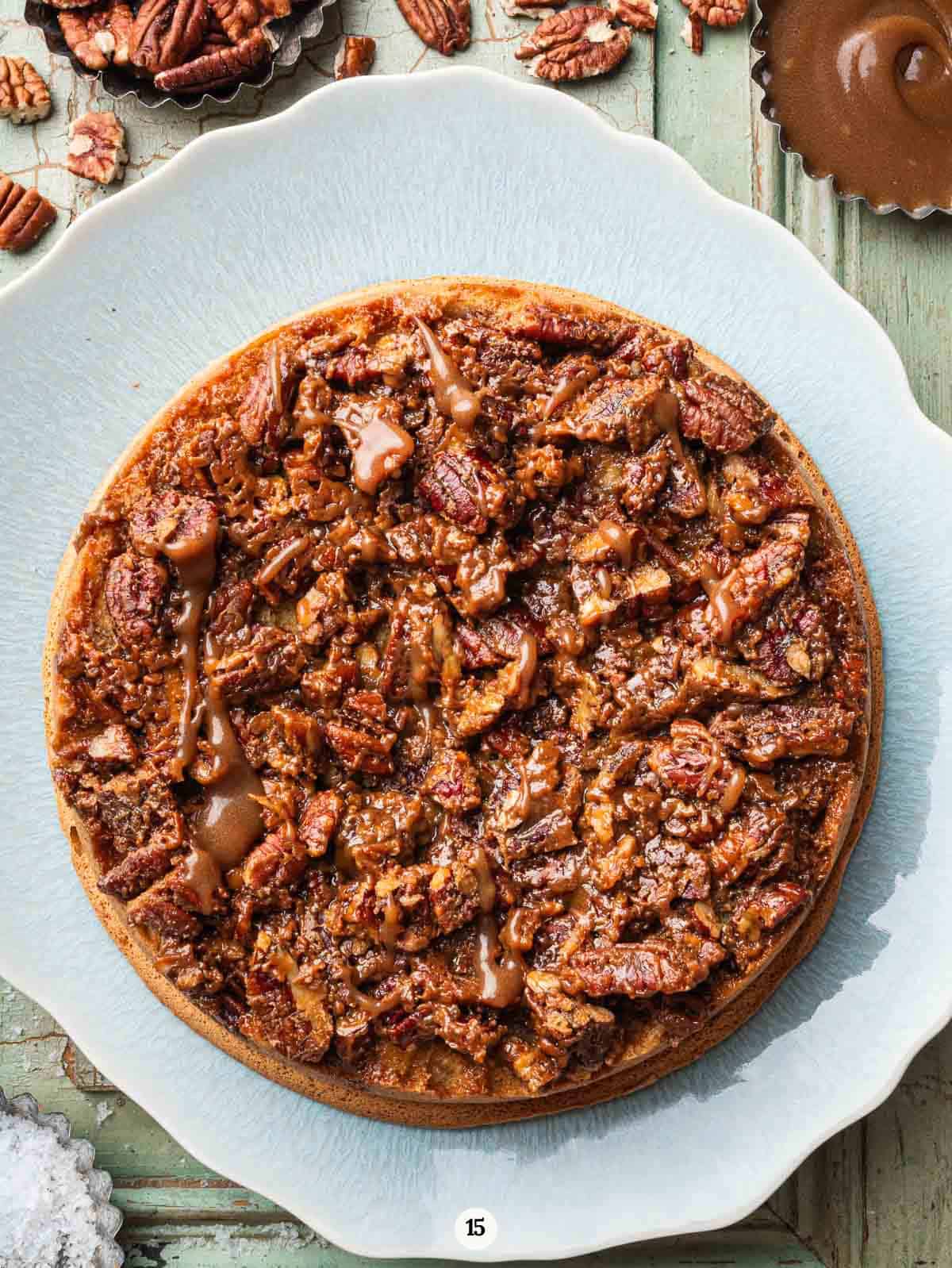
Step 8. Invert the cake – Carefully invert the cake onto a serving platter (Image 15). Some of the caramel pecan topping may stick to the pan: that’s perfectly fine! Use a silicone spatula to gently scrape off any stuck bits and arrange them back on the cake. If the topping looks too flat in places, break up any larger pieces and scatter them to create visual interest. This cake is beautifully rustic, and the pecans must have dimension and character.
Nim Keys – Useful Pecan Upside Down Cake Tips
- Weigh your ingredients – Baking is all about precision. A digital kitchen scale ensures consistent results by eliminating the inaccuracies of measuring cups. For foolproof baking, always weigh instead of measuring by volume.
- Avoid a springform pan – The caramel layer can leak out during baking, making a mess in your oven. Stick to a solid round pan for the best results.
- Line the pan with parchment paper – A round of parchment paper at the bottom of your cake pan reduces sticking when inverting. If some caramelized pecans stick to the pan, don’t panic—just scrape them off with a silicone spatula and arrange them back on top.
- Use room-temperature eggs – Cold eggs won’t whip properly. For a light and fluffy meringue, let eggs sit at room temperature for at least 30 minutes before baking (I used the same technique for my Blueberry Lemon Pancakes).
- Fold the génoise batter gently – When folding in the dry ingredients and melted butter, use a scooping and lifting motion to keep the batter light and airy. Overmixing will result in a dense cake.
- Invert the cake while warm – Cool the cake in the pan for 5 minutes, then invert it while still hot. If it cools too much, it may stick—trust me, rescuing a stuck cake is no fun!
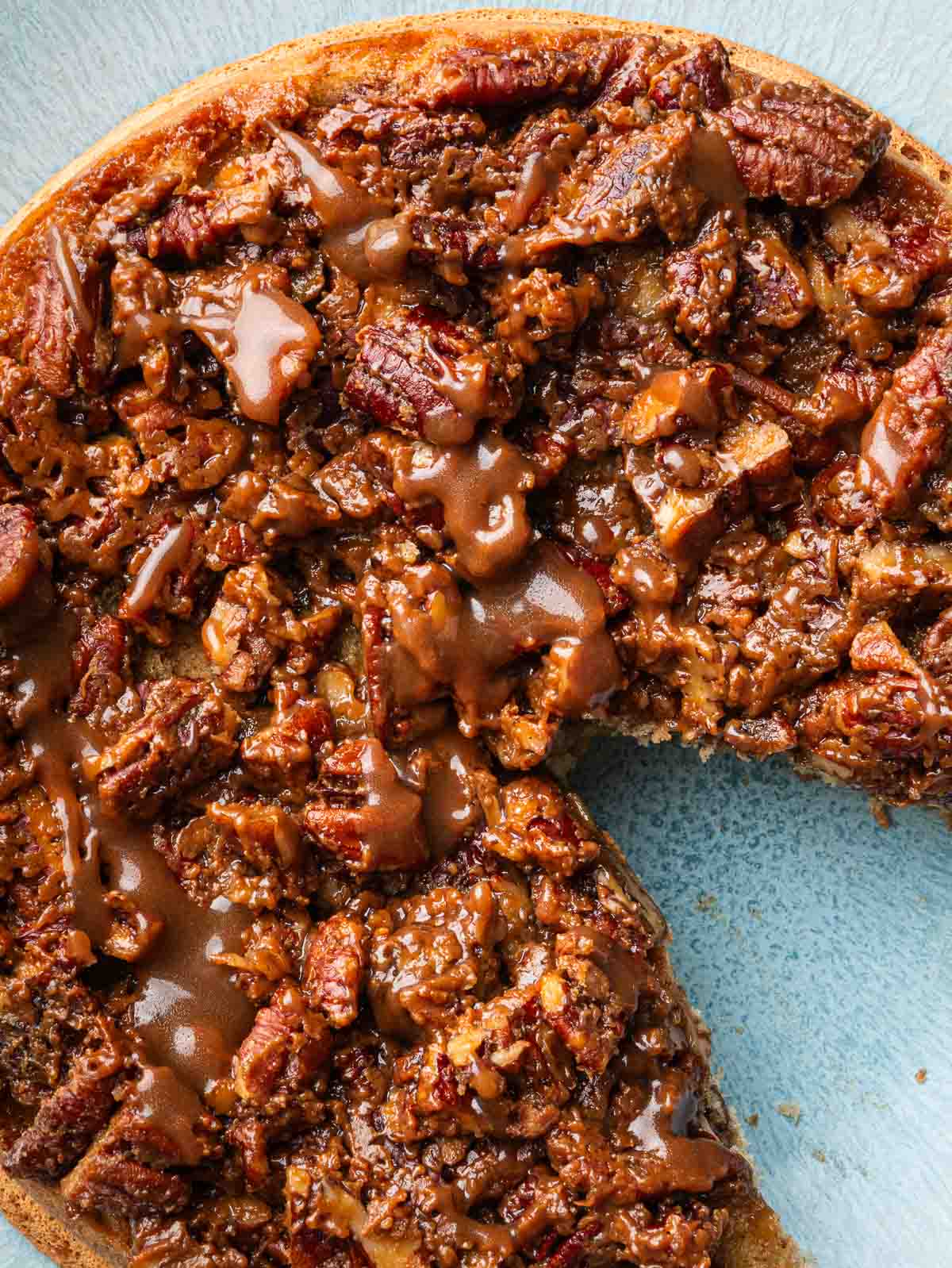
Recipe FAQs
Absolutely! An 8-inch (20 cm) square pan works well. However, avoid using a loaf pan because the caramelized pecan layer will be too thick. Also, do not use springform pans as the caramel will leak and create a sticky mess in your oven.
For a lovely tea time, I enjoy serving it with my French Rice Pudding “Riz Au Lait”. It’s absolutely dreamy!
Store the cake covered at room temperature for up to 2 days or refrigerate for up to 4 days. If chilled, let it come to room temperature before serving for the best texture and flavor.
Yes! Freeze the fully cooled cake by wrapping it tightly in plastic wrap and then aluminum foil to prevent freezer burn. Store for up to 1 month. To serve, thaw overnight in the fridge and bring to room temperature before slicing.
If you tried this Pecan Upside Down Cake or any other recipe on my blog, please leave a ✨ star rating and let me know how it went in the ✍️ comments below! Merci!

Pecan Upside Down Cake
PRINT SAVEEQUIPMENT
- 9-inch (23 cm) round pan (not a springform pan)
INGREDIENTS
For the butterscotch pecan layer
- 40 g (3 tablespoons) unsalted butter
- 70 g (⅓ cup) soft dark brown sugar (packed)
- ¼ teaspoon fleur de sel (or flaky sea salt)
- 80 ml (⅓ cup) heavy cream
- 150 g (1 ⅓ cups) raw pecans (roughly chopped)
For the génoise cake
- 4 free-range eggs (at room temperature)
- ⅛ teaspoon fine sea salt
- 150 g (¾ cup) granulated sugar
- 2 teaspoons vanilla powder or vanilla bean paste (alternatively you can use pure vanilla extract)
- 125 g (1 cup) cake or pastry flour
- 50 g (¼ cup) melted unsalted butter
INSTRUCTIONS
Make the butterscotch pecan layer.
- Prepare the pan – Preheat the oven to 325°F (170°C) with the fan on. Generously butter a 9-inch (23 cm) round cake pan, then line the bottom with a round of parchment paper cut to fit. Brush the parchment paper with butter as well. Set aside.
- Make the butterscotch sauce – In a medium heavy-bottomed saucepan (avoid non-stick), melt the butter over medium heat. Add the brown sugar, salt, and heavy cream, stirring gently with a rubber spatula until smooth and well-blended. Bring the mixture to a gentle boil, occasionally scraping down the sides of the pan. Let it boil for 4 minutes, stirring often, until the sauce is velvety and slightly thickened.
- Add the pecans – Remove the saucepan from the heat and stir in the chopped pecans until evenly coated in the butterscotch sauce. Immediately pour the mixture into the prepared pan, spreading the pecans into an even layer. Set aside.
Make the génoise cake.
- Make the meringue – Separate the egg whites from the yolks. In a large mixing bowl, whisk the egg whites and salt on medium speed until foamy (about 45 seconds). Gradually add the sugar in three additions, whisking for 1 minute after each addition. Continue whisking until stiff peaks form, about 5 minutes total. Finish by increasing the mixer speed to high for 10 seconds to firm up the meringue.
- Add egg yolks and vanilla – Add the egg yolks and vanilla bean paste to the meringue. Mix on low speed until just combined, scraping the sides of the bowl to ensure everything is fully incorporated. Be careful not to overwork the batter and stop as soon as it’s mixed.
- Fold in the dry ingredients & butter – Sift the flour over the meringue mixture. Using a rubber spatula, gently fold by scooping from the bottom and lifting the mixture over the top. Repeat until fully combined, being careful not to deflate the meringue. Then, add the melted butter and fold it in gently, using the same delicate motions.
Bake the cake.
- Pour and bake – Pour the génoise batter over the butterscotch pecan layer. Bake for 35 minutes, or until the cake is risen, golden, and a toothpick inserted into the center comes out clean. Let the cake cool in the pan for 5 minutes (no longer). If the cake cools too much, it may stick when you try to remove it.
- Invert the cake – Carefully invert the cake onto a serving platter. Some of the caramel pecan topping may stick to the pan: that’s perfectly fine! Use a silicone spatula to gently scrape off any stuck bits and arrange them back on the cake. If the topping looks too flat in places, break up any larger pieces and scatter them to create visual interest. Enjoy warm or at room temperature!
NOTES
- Weigh your ingredients – Baking is all about precision. A digital kitchen scale ensures consistent results by eliminating the inaccuracies of measuring cups. For foolproof baking, always weigh instead of measuring by volume.
- Avoid a springform pan – The caramel layer can leak out during baking, making a mess in your oven. Stick to a solid round pan for the best results.
- Line the pan with parchment paper – A round of parchment paper at the bottom of your cake pan reduces sticking when inverting. If some caramelized pecans stick to the pan, don’t panic—just scrape them off with a silicone spatula and arrange them back on top.
- Use room-temperature eggs – Cold eggs won’t whip properly. For a light and fluffy meringue, let eggs sit at room temperature for at least 30 minutes before baking.
- Fold the génoise batter gently – When folding in the dry ingredients and melted butter, use a scooping and lifting motion to keep the batter light and airy. Overmixing will result in a dense cake.
- Invert the cake while warm – Cool the cake in the pan for 5 minutes, then invert it while still hot. If it cools too much, it may stick—trust me, rescuing a stuck cake is no fun!





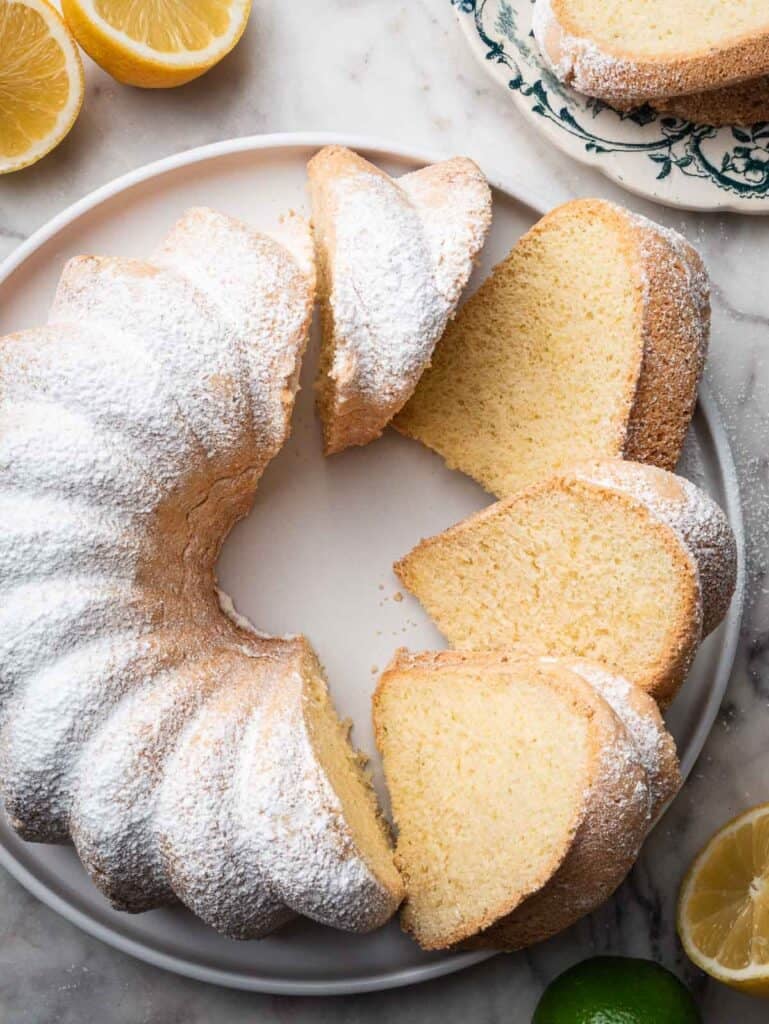

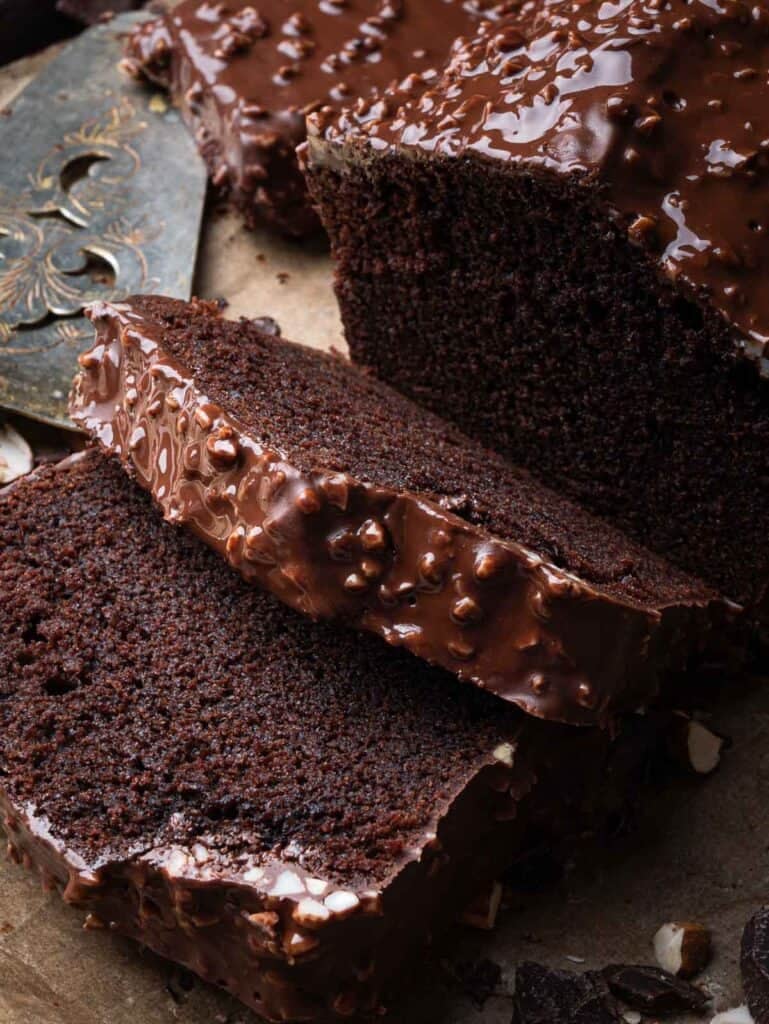

So good! The cake is light and airy, and the butterscotch sauce with the crunchy pecans is just incredible. It was easier to make than I expected, and everyone loved it. Definitely making this again!
Thank you so much for giving the recipe a try, Claire! I’m so glad you enjoyed it!